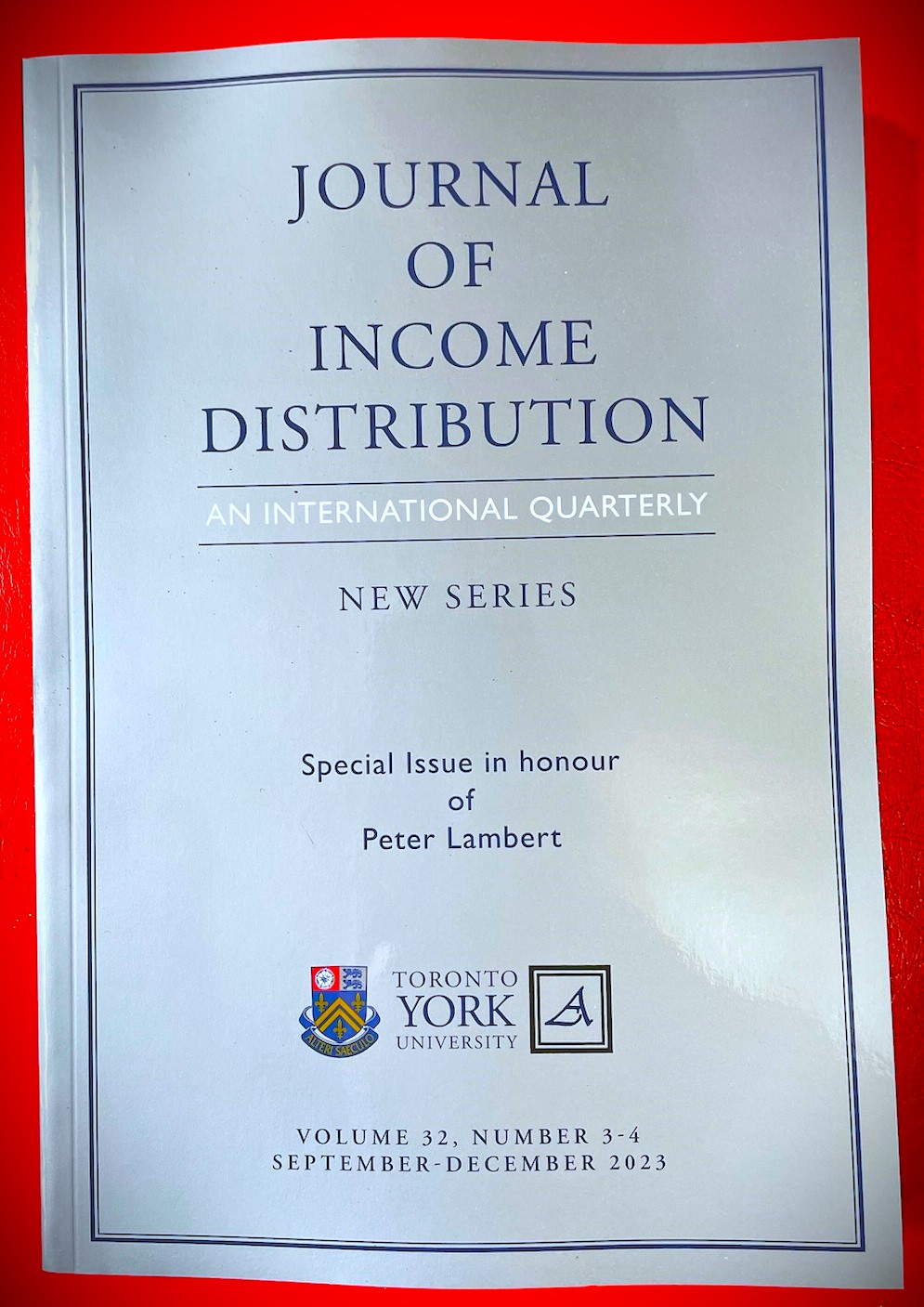On an Apparently Innocuous Difference in Two Versions of Gini’s Coefficient of Inequality
A Symposium
Keywords:
inequality measurement, Corrado Gini, Gini coefficientAbstract
The Gini coefficient is a leading measure of inequality and is widely employed in the social sciences as a summary statistic for income or wealth distributions. In this symposium we combine three contributions – presenting a conversation, really – about the foundations of the Gini coefficient. The differences, expressed within the boundaries of the congenial esteem that we have for one another, are centred around an appropriate formula for the Gini. To the immediate query as to why we simply do not use Gini’s own formula and conclude the matter with that, there are two responses. Firstly, Gini himself proposed no fewer than thirteen versions of his measure, rendering that approach inconclusive. Less flippantly, this discussion is not so much about the choice of a specific formula. Rather, it is about what we are trying to capture when measuring inequality and what the appropriate role of a particular philosophical axiom, one that is often involved in inequality measurement – the population principle, is in this context.
References
Allison, P.D. 1979 “Reply to Jasso”, American Sociological Review 44(5): 870–872.
Atkinson, A.B. 1983 The Economics of Inequality New York: Oxford University Press.
Bowles, S., and W. Carlin 2020 “Inequality as Experienced Difference: A Reformulation of the Gini Coefficient” Economics Letters 186: 1–3. doi.org/10.1016/j.econlet.2019.108789
Ceriani, L., and P. Verme 2012 “The origins of the Gini index: Extracts from Variabilità e Mutabilità (1912) by Corrado Gini”, The Journal of Economic Inequality 10(3): 421–443. doi.org/10.1007/s10888-011-9188-x
Cowell, F.A., and F. Mehta 1982 “The estimation and interpolation of inequality measures”, The Review of Economic Studies 49(2): 273–290. doi.org/10.2307/2297275
Dalton, H. 1920 “The measurement of the inequality of incomes”, Economic Journal 30: 348–361.
Dasgupta, P., A. Sen, and D. Starrett 1973 “Notes on the measurement of inequality”, Journal of Economic Theory 6(2): 180–187. doi.org/10.1016/0022-0531(73)90033-1
Deaton, Angus 1997 The Analysis of Household Surveys: A Microeconometric Approach to Development Policy Washington, D.C.: World Bank Group.
Esteban, J.-M., and D. Ray 1994 “On the measurement of polarization”, Econometrica 62(4): 819–851.
Fehr, Ernst, and Klaus M. Schmidt 1999 “A Theory of Fairness, Competition, and Cooperation”, Quarterly Journal of Economics 114(3): 817-68.
Fields, G., and J.C.H. Fei 1978 “On inequality comparisons”, Econometrica 46(2): 306–316.
Foster, James 1983 “An axiomatic characterization of the Theil measure of income inequality”, Journal of Economic Theory 31(1): 105–121. doi.org/10.1016/0022-0531(83)90023-6
Gastwirth, J.L., and M. Glauberman 1976 “The interpolation of the Lorenz curve and Gini index from grouped data”, Econometrica 44(3): 479–483.
Gini, C. 1912 Variabilità e Mutabilità: Contributo allo Studio delle Distribuzioni e delle Relazioni Statistiche Bologna: C. Cuppini.
—– 1914 “Sulla misura della concentrazione e della variabilità dei caratteri”, Atti del Reale Istituto Veneto di Scienze, Lettere ed Arti 73: 1203–1248.
—– 2005 “On the measurement of concentration and variability of characters”, International Journal of Statistics 63(1): 1–38. [Translation of Gini, C. 1914]
Jasso, G. 1979 “On Gini’s mean difference and Gini’s index of concentration”, American Sociological Review 44(5): 867–870.
Lorenz, M.O. 1905 “Methods of measuring the concentration of wealth”, Publications of the American Statistical Association 9(70): 209–219. doi.org/10.1080/15225437.1905.10503443
Mamunuru, S.M, A Shrivastava, and A Jayadev 2023 “Social Networks and Experienced Inequality” Unpublished working paper.
Ray, Debraj 1998 Development Economics Princeton, NJ: Princeton University Press.
Ross, C.T., M. Borgerhoff Mulder, S.-Y. Oh, S. Bowles, B. Beheim, J. Bunce, M. Caudell, G. Clark, H. Colleran, C. Cortez, P. Draper, R.D. Greaves, M. Gurven, T. Headland, J. Headland, K. Hill, B. Hewlett, H.S. Kaplan, J. Koster, K. Kramer, F. Marlowe, R. McElreath, D. Nolin,
M. Quinlan, R. Quinlan, C. Revilla-Minaya, B. Scelza, R. Schacht, M. Shenk, R. Uehara, E. Voland, K. Willführ, B. Winterhalder, and J. Ziker 2018. “Greater Wealth Inequality, Less Polygyny: Rethinking the Polygyny Threshold Model”, Journal of the Royal Society Interface 15(144): 1-15 (18 July).
Rothschild, M., and J.E. Stiglitz 1970 “Increasing risk: I. A definition”, Journal of Economic Theory 2(3): 225–243. doi.org/10.1016/0022-0531(70)90038-4
Sen, A. 1973, expanded edition with James Foster 1997 On Economic Inequality Oxford, UK: Oxford University Press.
Subramanian, S. 2002 “An elementary interpretation of the Gini inequality index”, Theory and Decision 52: 375–379. doi.org/10.1023/A:1020237003687
—– 2010 “Variable populations and inequality-sensitive ethical judgments”, In Banasri Basu, Satya R. Chakravarty, Bikas K. Chakrabarti, and Kausik Gangopadhyay (Eds.) Econophysics and Economics of Games, Social Choices and Quantitative Techniques. pp. 181–191. Milano: Springer. doi.org/10.1007/978-88-470-1501-2_20
Thon, D. 1982 “An axiomatization of the Gini coefficient”, Mathematical Social Sciences 2(2): 131–143. doi.org/10.1016/0165-4896(82)90062-2
Yitzhaki, S., and E. Schechtman 2013 The Gini methodology: A Primer on a Statistical Methodology New York: Springer.





